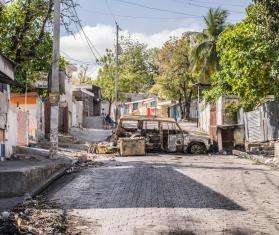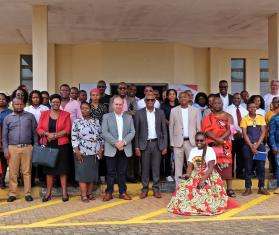Geneva, 1 December 2000, World AIDS Day — The international medical aid agency Doctors Without Borders/Médecins Sans Frontières (MSF) calls on multinational drug companies to deliver on their promise to drastically reduce AIDS drug prices. On May 11th 2000, The Wall Street Journal reported that UNAIDS and five drug companies were offering "to slash the prices of HIV drugs for people living in poor countries." According to the article, exact prices were supposed to be settled upon in the weeks to come. More than six months later, there is still little progress on the promised discount.
As the first step of a two-tiered approach, MSF calls on the five multinational drug companies to immediately reduce the price of their AIDS drugs in poor countries by at least 95 per cent of the US wholesale price. In practice, this means that Glaxo Wellcome should make its drug AZT/3TC available for US$1.00 a day against its current $19.60, Bristol-Myers Squibb should charge $0.49 a day for d4T against the present $9.80, and Merck $0.65 for efavirenz, which now costs $13.20. Major discounts for poor countries should be similar to those already in place for vaccines and contraceptives. The polio vaccine, for example, is sold to UN agencies for $0.09 while it costs $10.93 in the US1.
"95 per cent of people living with HIV/AIDS dwell in poor countries and cannot afford medicines that could prolong and improve the quality of their lives. We challenge the drug companies to deliver on their promises and publicly respond to this demand by the first week of 2001," says Dr. Bernard Pécoul, director of MSF's Access to Essential Medicines Campaign.
But price reductions are only one possible option for poor countries to increase access to life-prolonging AIDS drugs. Countries that have not waited for large multinationals to lower prices have already brought down the cost of antiretroviral drugs dramatically, as MSF research1 shows. Brazil is the most striking example of how local generic drug production can reduce prices. Due to the introduction of less expensive generics, as many as 1000 HIV/AIDS patients are being treated in Brazil for the price of treating only 228 in Uganda.
The Brazilian approach has been to import the best quality generic raw materials and locally manufacture finished products. Countries such as Burkina Faso, Cambodia, Guatemala, South Africa and Uganda have been speaking both to Brazilian and Indian generic manufacturers that can sell the products at true discounted prices. Brazil has also been discussing technology transfer with other developing countries, so that they can begin producing their own quality medicines.
The UNAIDS company initiative requires countries to negotiate with each of the multinational companies for each of the drugs they produce. This system diverts precious human resources from national AIDS programs. Real, across-the-board price reductions and encouragement of the use of generics would benefit people with HIV/AIDS immediately.
Footnote:
1) HIV/AIDS medicines pricing report. Setting Objectives: Is There a Political Will?. MSF, July 6th 2000. Available on www.accessmed-msf.org.



